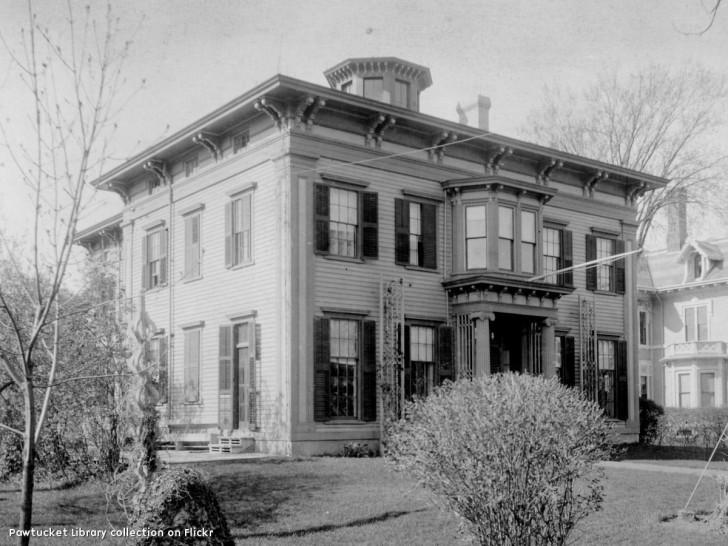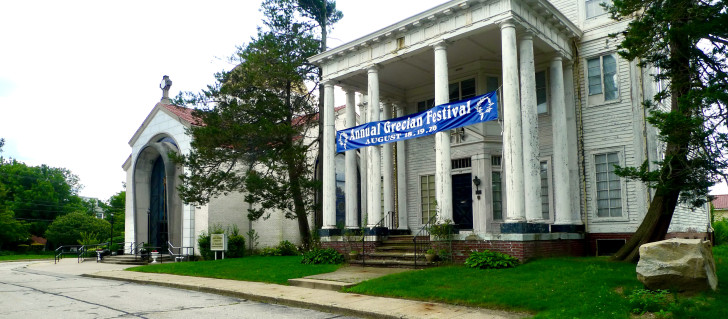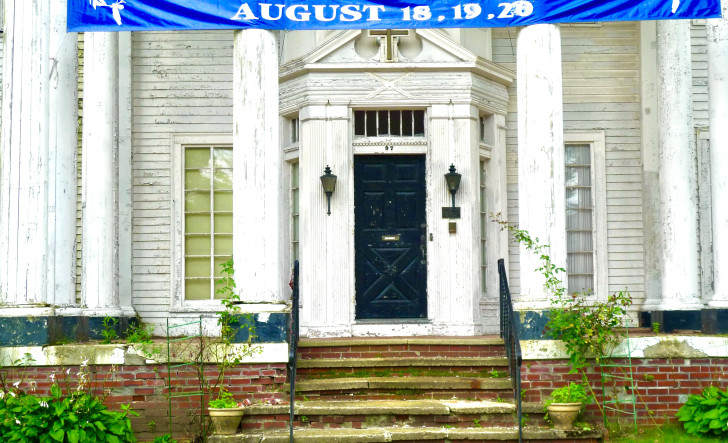A Historic Gem Is Targeted for Demolition by the Church - Architecture Critic Morgan
Saturday, July 29, 2023
GET THE LATEST BREAKING NEWS HERE -- SIGN UP FOR GOLOCAL FREE DAILY EBLAST
Two immigrants to Pawtucket, John Read from Maine and Joseph Ott from Germany, were part of the cadre of successful businessmen and mill owners that made Pawtucket a national industrial powerhouse in the late-19th and early-20th centuries. The hardware merchant and the silk manufacturer were among the wealthy and powerful whose grand mansions gave the Quality Hill neighborhood its name. Now the magnificent house that Read built in 1842, and that Ott enlarged in 1915, is about to be demolished–a representative of the city’s grandeur and influence reduced to dust, a symbol of a general failure to protect Pawtucket’s patrimony.
The Walcott Street house is one of the more spectacular residences of the scores that contribute to the richness of Quality Hill. A tour of the National Register historic district reminds us that, although we hold up College Hill and Newport as the architectural gems of Rhode Island, Pawtucket is also home to a remarkable collection of treasures. And John Read’s Italianate palazzo is one of the oldest houses in the district. This elegant rendition of the style made popular by Queen Victoria’s consort Prince Albert features walk-through ground-floor windows, paired cornice brackets, and an octagonal cupola on the roof.
Before enlarged, the John Read house was a paragon of a hardware mogul’s success: handsomely proportioned, stately, serious. Pawtucket Library.
Joseph Ott was in charge of a 1000-loom mill in Holyoke, Massachusetts, before moving to the Blackstone Valley and developing a loom for fine silk weaving. Apparently, Read’s quiet exercise in domesticity was not nearly grand enough for Ott. So, Ott hired noted country house architect William George Sheldon to add a third story to the rear, along with a monumental full-height Roman portico worthy of a courthouse or major Southern plantation.
The dramatic change in style tells of the story of changes in Pawtucket’s fortunes and that of its captains of industry (given the time frame, perhaps they can be labeled robber barons). Part of the evolutionary tale of a city, the Read-Ott house became the temporary home of the Greek Orthodox Assumption of the Virgin Mary in 1967, when their George Street church was in the path of the of the new I-95. The house served a lot of the functions associated with a church, such as rectory, classrooms, and meeting spaces. By the late 1990s, the house was no longer used, its trajectory toward demolition by neglect was set. (The city has twice cited the church for failure to make repairs on the house.)
As is often the case, buildings often outlive their usefulness, they become too expensive to maintain, or as is often the case, maintenance is deferred to the point where the owners claim safety issues–the building is too dangerous to occupy and is beyond repair. Furthermore, painting such a house would cost around $10,000. Given the quarter-century time span, one might reasonably conclude that the parish decided that they were just going to let the Read-Ott house rot. Assumption now has a permit to eradicate this particular Pawtucket historical fingerprint, and unless there is a miracle, the Read-Ott house will soon disappear forever.
Demolition was recently stalled by Pawtucket’s Historic District Commission. The HDC requires that anyone seeking to demolish an historic structure “must make a good faith effort to demonstrate that all alternatives to demolition have been evaluated.” Rehabilitation, sale to a sympathetic party, or moving the structure, are options. Demolition permit applications also “require information about how the site will be treated once the building is removed.” Assumption was not forthcoming with such assurances, nor did they share any master plans. They did, however, turn down a quarter-million-dollar offer on the house, while advice from such organizations as Preserve Rhode Island were only lukewarmly received.
Sadly, this is a typical story. Likely too late now, alas, but one can imagine the house being repurposed for housing or some other income-producing solution for the church–a hospice, a Greek language school, apartments for parishioners? There would still be plenty of open space around the church for future expansion, such as a parish house, without letting the Read-Ott house disappear. One can empathize with the costs of supporting a congregation and maintaining its real estate in a city that is a ghost of its once hugely prosperous self. Nevertheless, this a loss that should not have happened.
1915 entrance to the Read-Ott house. Note Colonial revival doorway, the entablature formed by bundled fasces, symbol of Roman civil power. PHOTO: Will Morgan

GoLocal architecture critic Morgan has an undergraduate degree from Dartmouth and two graduate degrees from Columbia. He has taught at Princeton and at Brown. He likes to remind people that the Ivy League is merely a collegiate athletic conference.
Related Articles
- A Major Addition to Rhode Island in Newport -– Architecture Critic Morgan
- New Worker Housing: North Main Street – Architecture Critic Morgan
- The Carpenters Union: An Impressive New Home on I-95 – Architecture Critic Morgan
- Trader Joe’s: Great Market, Lost Opportunity–Architecture Critic Morgan
- Former Mashpee Wampanoag Tribe Chairman and Top RI Architecture Firm CEO Sentenced in Bribery Case
- Déjà Vu All Over Again: Gano Street Apartments – Architecture Critic Morgan
- Domestic Triumph on Boylston Avenue – Architecture Critic Will Morgan
- The Edsel of Urban Design — Architecture Critic Will Morgan
- Should Architects Run for Office? – Architecture Critic Morgan
- Can We Make Schools Safe Without Turning Them Into Fortresses? – Architecture Critic Morgan
- Coffee Exchange Redux – Architecture Critic Morgan
- Faltering Fane Tower – Architecture Critic Morgan
- More Storage, Less Livable City – Architecture Critic Morgan
- License Plate Dilemma – Architecture Critic Morgan
- PPAC Square: Paris in Providence–Architecture Critic Morgan
- Brown Performing Arts Center: White Hope or White Elephant? – Architecture Critic Morgan
- “New” Home of the Providence Preservation Society–Architecture Critic Will Morgan
- Old Miriam Hospital Transformed to Elegant Living on Parade St.—Morgan, Architecture Critic
- Goodbye Fox Point—William Morgan, Architecture Critic
- COLLIER: The City’s Coolest Park–Architecture Critic Morgan
- The Elegance of Weed: Mother Earth–Architecture Critic Morgan
- Pawtucket/Central Falls T Station Lacks Design–Architecture Critic Morgan
- The Center of the City – Architecture Critic Morgan
- Wayland Bakery Reborn as Apartments – Architecture Critic Morgan







